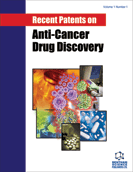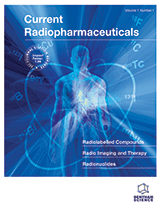Abstract
Background: Radiation is one of the main modalities for the treatment of cancer. However, tumor resistance and recurrence are currently major clinical challenges. Here, we screened for the possible therapeutic effect of perylenequinone derivatives (PDs) administered in combination with radiotherapy in various tumor types both in vitro and in vivo by testing their impact on tumor initiating cells (TICs). Methods: U87, MCF7, HT29, A549 and PANC1 tumor cell lines were grown under standard culture conditions, or as non-adherent TIC-enriched cultures. Cultured cells were treated with 0.1-2µM of PDs Hypericin (Hy), Hypericin tetrasulfonate (HyTS) or Tetrabromo hypericin (TBrHy), and exposed to either single high-dose or fractionated daily-dose radiation. Cell viability was assessed. Furthermore, tumor growth of PANC1 and U87 cells which were implanted in mice that subsequently were injected with the PDs and exposed to local ionizing radiation was assessed. Results: Our results show that PDs significantly inhibited viability of irradiated tumor cells cultured in normal and TICenriched conditions of various cell lines. Moreover, TBrHy significantly delayed U87 and PANC1 tumor growth in mice receiving high-dose radiation.Conclusions: These results indicate that TIC viability can be used as a method to test radiosensitizing activity. As such, PDs could potentially be effective radiosensitizing agents that may target tumor cells and TICs, highlighting their potential therapeutic value.
Keywords: Hypericin, cancer stem cells, radiosensitizing agents, high-dose radiation, cell viability.
Graphical Abstract
Clinical Cancer Drugs
Title:Hypericin and its Derivatives Act as Radiosensitizing Agents That Can Inhibit Tumor Initiating Cell Viability
Volume: 2
Author(s): Moshe Schaffer, Rotem Bril, Ron Batash, Benjamin Ehernberg, Guy Leshem, Shai Rahimipour and Yuval Shaked
Affiliation:
Keywords: Hypericin, cancer stem cells, radiosensitizing agents, high-dose radiation, cell viability.
Abstract: Background: Radiation is one of the main modalities for the treatment of cancer. However, tumor resistance and recurrence are currently major clinical challenges. Here, we screened for the possible therapeutic effect of perylenequinone derivatives (PDs) administered in combination with radiotherapy in various tumor types both in vitro and in vivo by testing their impact on tumor initiating cells (TICs). Methods: U87, MCF7, HT29, A549 and PANC1 tumor cell lines were grown under standard culture conditions, or as non-adherent TIC-enriched cultures. Cultured cells were treated with 0.1-2µM of PDs Hypericin (Hy), Hypericin tetrasulfonate (HyTS) or Tetrabromo hypericin (TBrHy), and exposed to either single high-dose or fractionated daily-dose radiation. Cell viability was assessed. Furthermore, tumor growth of PANC1 and U87 cells which were implanted in mice that subsequently were injected with the PDs and exposed to local ionizing radiation was assessed. Results: Our results show that PDs significantly inhibited viability of irradiated tumor cells cultured in normal and TICenriched conditions of various cell lines. Moreover, TBrHy significantly delayed U87 and PANC1 tumor growth in mice receiving high-dose radiation.Conclusions: These results indicate that TIC viability can be used as a method to test radiosensitizing activity. As such, PDs could potentially be effective radiosensitizing agents that may target tumor cells and TICs, highlighting their potential therapeutic value.
Export Options
About this article
Cite this article as:
Schaffer Moshe, Bril Rotem, Batash Ron, Ehernberg Benjamin, Leshem Guy, Rahimipour Shai and Shaked Yuval, Hypericin and its Derivatives Act as Radiosensitizing Agents That Can Inhibit Tumor Initiating Cell Viability, Clinical Cancer Drugs 2015; 2 (2) . https://dx.doi.org/10.2174/2212697X02666150511203657
| DOI https://dx.doi.org/10.2174/2212697X02666150511203657 |
Print ISSN 2212-697X |
| Publisher Name Bentham Science Publisher |
Online ISSN 2212-6988 |
 31
31 1
1
- Author Guidelines
- Bentham Author Support Services (BASS)
- Graphical Abstracts
- Fabricating and Stating False Information
- Research Misconduct
- Post Publication Discussions and Corrections
- Publishing Ethics and Rectitude
- Increase Visibility of Your Article
- Archiving Policies
- Peer Review Workflow
- Order Your Article Before Print
- Promote Your Article
- Manuscript Transfer Facility
- Editorial Policies
- Allegations from Whistleblowers
- Announcements
Related Articles
-
Cellular Functions of Vaults and their Involvement in Multidrug Resistance
Current Drug Targets Clinical Impact of Gene Expression Profiling on Oncology Diagnosis, Prognosis, and Treatment
Combinatorial Chemistry & High Throughput Screening Use of the Bradykinin Agonist, Cereport as a Pharmacological Means of Increasing Drug Delivery to the CNS
Current Medicinal Chemistry - Immunology, Endocrine & Metabolic Agents The Role of Natural Products in the Discovery of New Drug Candidates for the Treatment of Neurodegenerative Disorders I: Parkinsons Disease
CNS & Neurological Disorders - Drug Targets The Blood-Brain Barrier in Multiple Sclerosis: microRNAs as Key Regulators
CNS & Neurological Disorders - Drug Targets Antiinflammatory Activity of Melatonin in Central Nervous System
Current Neuropharmacology cAMP-Mediated Regulation of CYP Enzymes and Its Application in Chemotherapy
Drug Metabolism Letters The Role of the RhoA/rho-kinase Pathway in Pulmonary Hypertension
Current Drug Discovery Technologies A Review of Studies on Targeting Interleukin 4 Receptor for Central Nervous System Malignancy
Current Molecular Medicine Pro-Inflammatory Cytokines and their Actions on the Metabolic Disturbances Associated with Cancer: Implications in Cachexia
Anti-Inflammatory & Anti-Allergy Agents in Medicinal Chemistry Autologous Formalin-Fixed Tumor Vaccine
Current Pharmaceutical Design Expression of Opioid Receptors During Peripheral Inflammation
Current Topics in Medicinal Chemistry Biohybrid Membrane Systems for Testing Molecules and Stem Cell Therapy in Neuronal Tissue Engineering
Current Pharmaceutical Design Long Non-coding RNA AFAP1-AS1 Facilitates Prostate Cancer Progression by Regulating miR-15b/IGF1R Axis
Current Pharmaceutical Design Non-histone Methylation of SET7/9 and its Biological Functions
Recent Patents on Anti-Cancer Drug Discovery Apoptosis-Inducing Effects of Amaryllidaceae Alkaloids
Current Medicinal Chemistry Cutaneous Melanoma: A Test Field for Immunotherapy and a Medical Challenge
Current Cancer Therapy Reviews A Review on Structures and Functions of Bcl-2 Family Proteins from Homo sapiens
Protein & Peptide Letters Resveratrol and Clinical Trials: The Crossroad from In Vitro Studies to Human Evidence
Current Pharmaceutical Design Biology of Transforming Growth Factor-β Signaling
Current Pharmaceutical Biotechnology





















